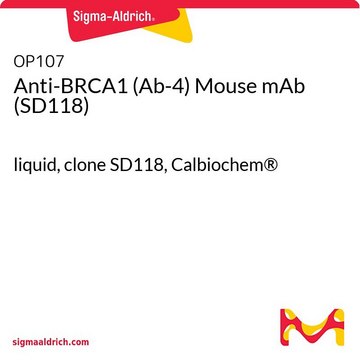Key Documents
10236276001
Roche
DAPI
4′,6-Diamidine-2′-phenylindole dihydrochloride
Synonim(y):
4′,6-Diamidino-2-phenylindole dihydrochloride, 2-(4-Amidinophenyl)-6-indolecarbamidine dihydrochloride, DAPI dihydrochloride
About This Item
Polecane produkty
Poziom jakości
Próba
>90%
Postać
powder
opakowanie
pkg of 10 mg
producent / nazwa handlowa
Roche
λmaks.
340 nm in aq. suspension
fluorescencja
λex 340 nm; λem 488 nm (nur DAPI)
λex 364 nm; λem 454 nm (DAPI-DNA-Komplex)
temp. przechowywania
room temp
ciąg SMILES
Cl.Cl.NC(=N)c1ccc(cc1)-c2cc3ccc(cc3[nH]2)C(N)=N
InChI
1S/C16H15N5.2ClH/c17-15(18)10-3-1-9(2-4-10)13-7-11-5-6-12(16(19)20)8-14(11)21-13;;/h1-8,21H,(H3,17,18)(H3,19,20);2*1H
Klucz InChI
FPNZBYLXNYPRLR-UHFFFAOYSA-N
Szukasz podobnych produktów? Odwiedź Przewodnik dotyczący porównywania produktów
Powiązane kategorie
Zastosowanie
Działania biochem./fizjol.
Jakość
Zasada
Uwaga dotycząca przygotowania
Preparation of stock solution
Dissolve in double-dist. water to a final concentration of 1 to 5 mg/ml.
Note: Do not use any buffers.
Preparation of working solution
Dilute the stock solution with methanol to a final concentration of 1 μg/ml. The working solution is stable at 2 to 8 °C for about 6 months.
Storage conditions (working solution): Stock solution (1 to 5 mg/ml) at -15 to -25 °C for 12 months.
Working solution (1μg/ml) at 2 to 8 °C for about 6 months.
Rekonstytucja
Note: Prepare aliquots and store at -15 to -25 °C.
Kod klasy składowania
11 - Combustible Solids
Klasa zagrożenia wodnego (WGK)
WGK 2
Temperatura zapłonu (°F)
Not applicable
Temperatura zapłonu (°C)
Not applicable
Certyfikaty analizy (CoA)
Poszukaj Certyfikaty analizy (CoA), wpisując numer partii/serii produktów. Numery serii i partii można znaleźć na etykiecie produktu po słowach „seria” lub „partia”.
Masz już ten produkt?
Dokumenty związane z niedawno zakupionymi produktami zostały zamieszczone w Bibliotece dokumentów.
Klienci oglądali również te produkty
Nasz zespół naukowców ma doświadczenie we wszystkich obszarach badań, w tym w naukach przyrodniczych, materiałoznawstwie, syntezie chemicznej, chromatografii, analityce i wielu innych dziedzinach.
Skontaktuj się z zespołem ds. pomocy technicznej









